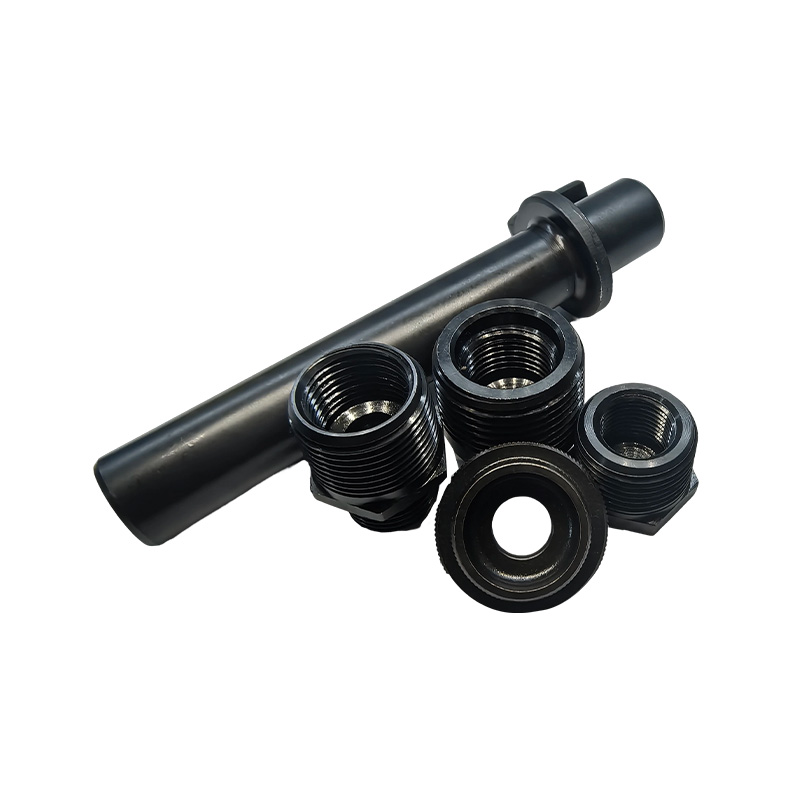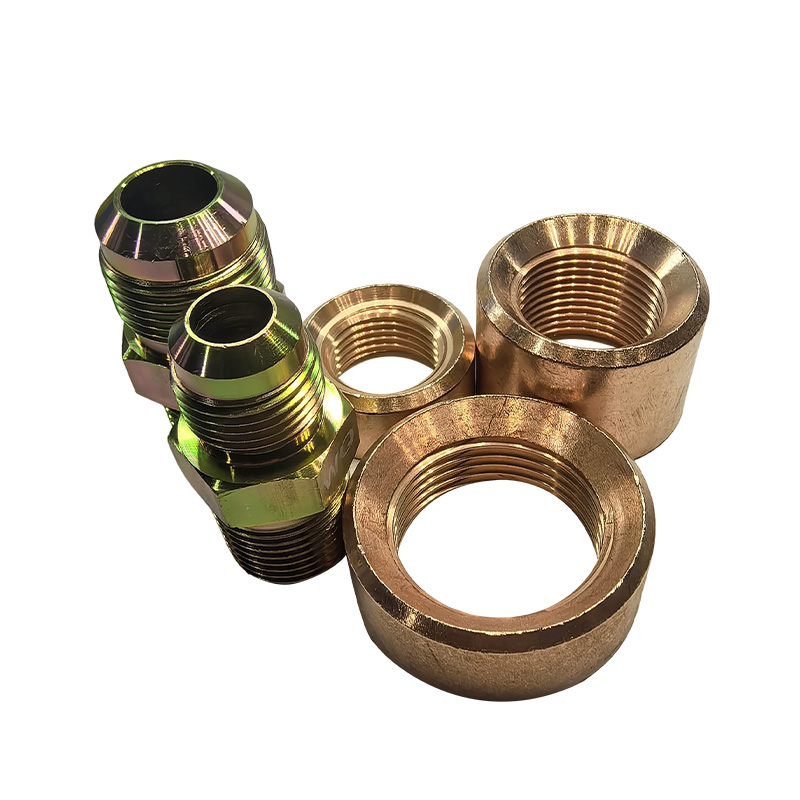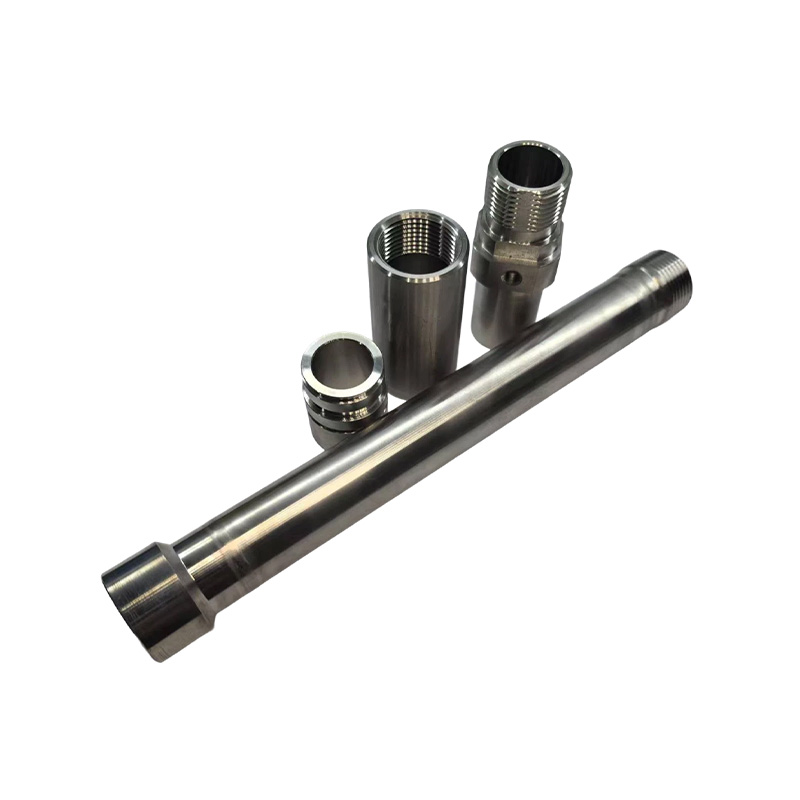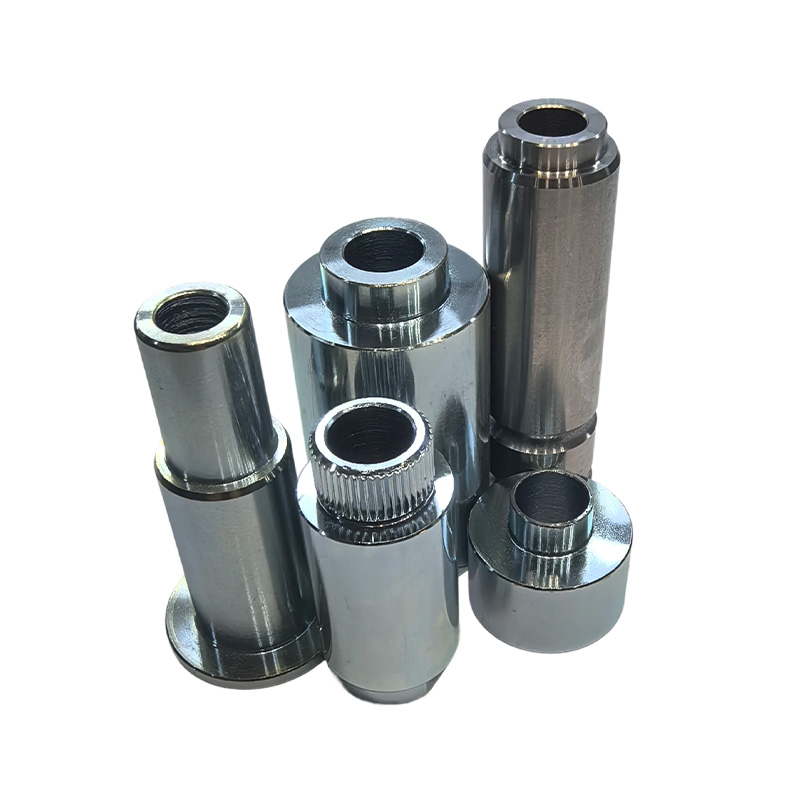Can galvanized connectors balance strength, sealing, and long-term corrosion resistance in diverse industrial applications?
Release Time : 2025-11-06
In various fields such as construction, energy, home appliances, and heavy machinery, connectors, though small components, play a crucial role in fluid transmission, structural fixation, and power transmission. When applications encompass water heater connectors, gas appliance interfaces, tower crane connecting shafts, and even various iron and stainless steel products, the comprehensive performance requirements for connectors become extremely stringent—they must withstand pressure and vibration, as well as resist moisture, corrosion, and long-term service. Therefore, can galvanized connectors balance strength, sealing, and long-term corrosion resistance in such diverse industrial applications? The answer to this question not only concerns product selection but also touches upon the deeper logic of materials engineering, surface treatment processes, and system safety.
The core advantage of galvanized connectors lies in the formation of a dense zinc protective layer on the carbon steel substrate through hot-dip galvanizing or electro-galvanizing processes. Zinc, acting as a sacrificial anode, preferentially oxidizes over iron, effectively delaying substrate corrosion. This characteristic makes it perform exceptionally well in environments involving water vapor, high temperatures, or mildly corrosive media, such as water heaters and gas appliances. Especially in domestic hot water systems, galvanized connectors can resist the corrosion of condensate and trace amounts of chloride ions for extended periods, preventing leaks or blockages caused by rust and ensuring water safety.
However, the requirements for the galvanized layer vary significantly depending on the application. For example, connecting shafts used in heavy steel structures such as tower cranes not only need to withstand high loads and alternating stresses but also need to be exposed to rain, salt spray, and even industrial atmospheres outdoors. In these cases, hot-dip galvanizing is the preferred choice due to its thick coating, strong adhesion, and good durability. For precision connectors in gas appliances, electroplating combined with passivation treatment is preferred, ensuring corrosion resistance while controlling dimensional tolerances and ensuring thread fit accuracy and airtightness. Blindly mixing different types of connectors can lead to sealing failure or even structural hazards.
It is worth noting that the combination of galvanized connectors and stainless steel products requires extreme caution. In humid environments, zinc can react with stainless steel to form galvanic corrosion (galvanic corrosion), accelerating zinc layer consumption. Therefore, in systems involving stainless steel piping, if galvanized connectors must be used, electrical isolation should be achieved through insulating gaskets or coatings, or all-stainless steel fittings should be selected directly to mitigate risks. This reflects the importance of the "material compatibility" principle in engineering practice.
Sealing performance is equally crucial. High-quality galvanized connectors adhere to international standards in their thread design (such as NPT and BSPP), and when used with PTFE tape or sealant, they can achieve reliable fluid seals. Some high-end products also employ pre-applied sealant or O-ring integrated designs to further enhance leak-proof capabilities, especially suitable for high-risk media such as natural gas. Rough galvanized surfaces or peeling coatings will damage the sealing interface, creating potential leakage hazards.
Furthermore, quality control of the galvanizing process itself is paramount. A uniform, unplated, peeling-free, and hydrogen-embrittled coating is a prerequisite for long-term protection. Inferior galvanized parts may develop white rust (basic zinc carbonate) or red rust (matrix corrosion) in a short period, affecting not only aesthetics but also weakening structural strength. Reputable manufacturers typically ensure their products meet industry standards through methods such as salt spray testing, adhesion testing, and hydrogen embrittlement testing.
In summary, the suitability of galvanized connectors for diverse industrial scenarios depends on whether they have undergone precise material matching, process optimization, and system integration for specific operating conditions. While not a panacea, given proper selection and standardized installation, their cost-effectiveness, reliable corrosion resistance, and sufficient mechanical strength make them a preferred choice for many low- to medium-corrosion environments. True professionalism lies not in blindly pursuing "advanced materials," but in understanding the forces, media, and time behind each connection, and scientifically matching them with the most suitable protector.
The core advantage of galvanized connectors lies in the formation of a dense zinc protective layer on the carbon steel substrate through hot-dip galvanizing or electro-galvanizing processes. Zinc, acting as a sacrificial anode, preferentially oxidizes over iron, effectively delaying substrate corrosion. This characteristic makes it perform exceptionally well in environments involving water vapor, high temperatures, or mildly corrosive media, such as water heaters and gas appliances. Especially in domestic hot water systems, galvanized connectors can resist the corrosion of condensate and trace amounts of chloride ions for extended periods, preventing leaks or blockages caused by rust and ensuring water safety.
However, the requirements for the galvanized layer vary significantly depending on the application. For example, connecting shafts used in heavy steel structures such as tower cranes not only need to withstand high loads and alternating stresses but also need to be exposed to rain, salt spray, and even industrial atmospheres outdoors. In these cases, hot-dip galvanizing is the preferred choice due to its thick coating, strong adhesion, and good durability. For precision connectors in gas appliances, electroplating combined with passivation treatment is preferred, ensuring corrosion resistance while controlling dimensional tolerances and ensuring thread fit accuracy and airtightness. Blindly mixing different types of connectors can lead to sealing failure or even structural hazards.
It is worth noting that the combination of galvanized connectors and stainless steel products requires extreme caution. In humid environments, zinc can react with stainless steel to form galvanic corrosion (galvanic corrosion), accelerating zinc layer consumption. Therefore, in systems involving stainless steel piping, if galvanized connectors must be used, electrical isolation should be achieved through insulating gaskets or coatings, or all-stainless steel fittings should be selected directly to mitigate risks. This reflects the importance of the "material compatibility" principle in engineering practice.
Sealing performance is equally crucial. High-quality galvanized connectors adhere to international standards in their thread design (such as NPT and BSPP), and when used with PTFE tape or sealant, they can achieve reliable fluid seals. Some high-end products also employ pre-applied sealant or O-ring integrated designs to further enhance leak-proof capabilities, especially suitable for high-risk media such as natural gas. Rough galvanized surfaces or peeling coatings will damage the sealing interface, creating potential leakage hazards.
Furthermore, quality control of the galvanizing process itself is paramount. A uniform, unplated, peeling-free, and hydrogen-embrittled coating is a prerequisite for long-term protection. Inferior galvanized parts may develop white rust (basic zinc carbonate) or red rust (matrix corrosion) in a short period, affecting not only aesthetics but also weakening structural strength. Reputable manufacturers typically ensure their products meet industry standards through methods such as salt spray testing, adhesion testing, and hydrogen embrittlement testing.
In summary, the suitability of galvanized connectors for diverse industrial scenarios depends on whether they have undergone precise material matching, process optimization, and system integration for specific operating conditions. While not a panacea, given proper selection and standardized installation, their cost-effectiveness, reliable corrosion resistance, and sufficient mechanical strength make them a preferred choice for many low- to medium-corrosion environments. True professionalism lies not in blindly pursuing "advanced materials," but in understanding the forces, media, and time behind each connection, and scientifically matching them with the most suitable protector.







